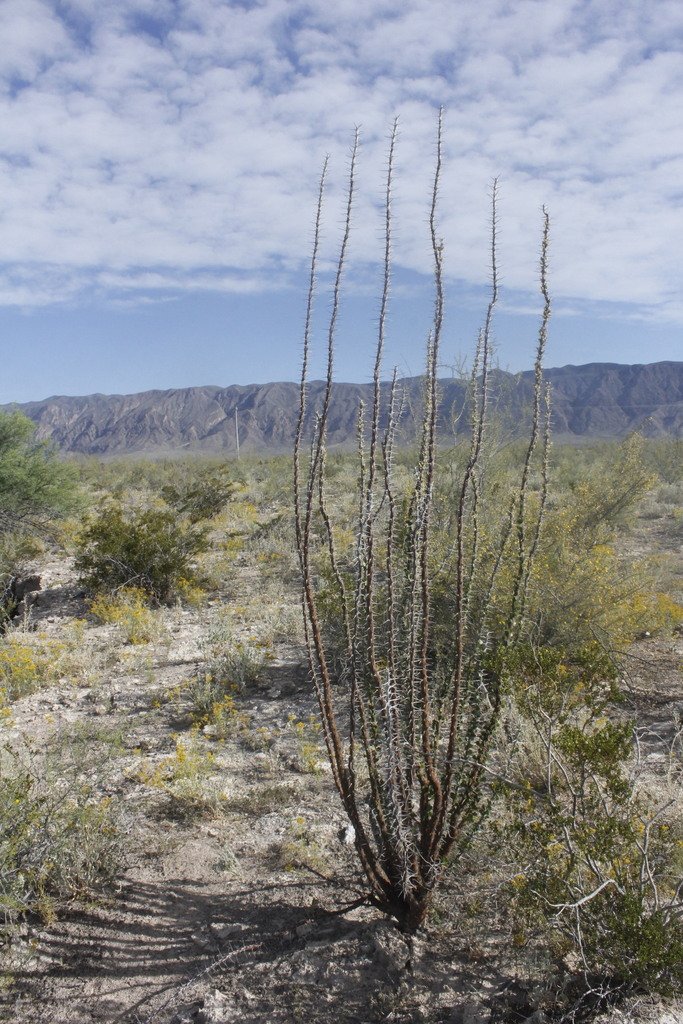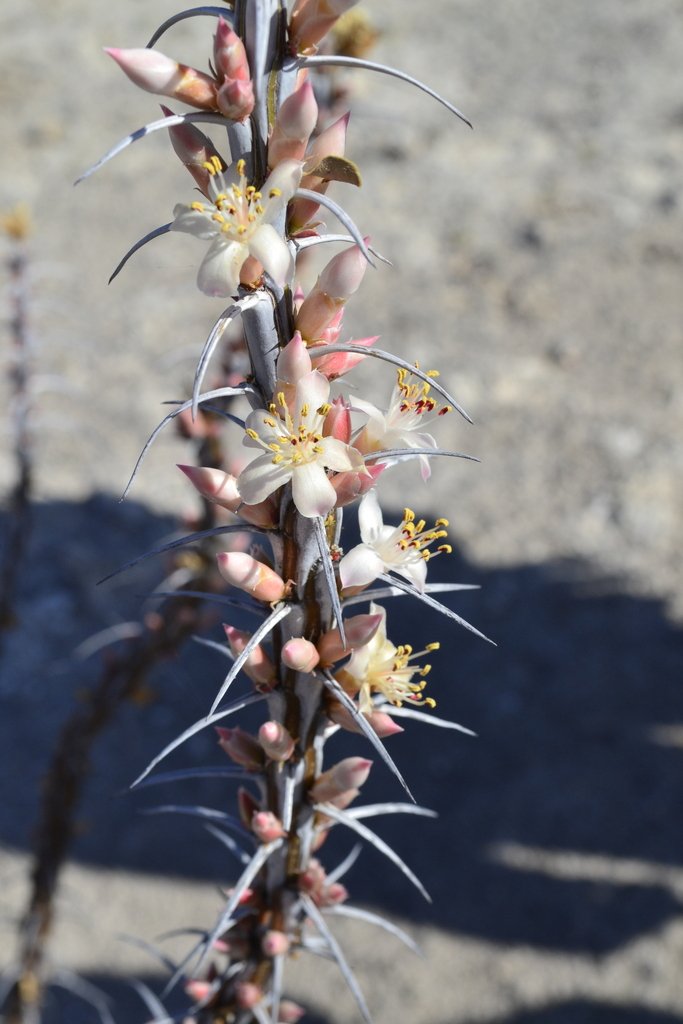Shreve's Ocotillo
Fouquieria shrevei
This is probably the rarest of the Fouquieria species. This plant grows very similarly to the classic ocotillo, though usually not as large (to about 10’ and most plants are much shorter). Flowers are white, born in short racemes in the axils of the leaves. The leaves are more board than ocotillo. The sparsely branched young shooths of this magnificent desert shrub are pale gray and armed with large, pale gray spines. With age, they shed the spines and develop a crusty, rusty orange bark, somwhat resembling a coral.
Plant in full to part sun. Plants are drought tolerant but plants in the ground benefit from watering 2-3 times a month in summer (in containers, 2-3 times a week). In winter, keep on the dry side, but if it doesn’t rain, water them about once a month. Container plants should be lightly watered about once a week in winter. Protect plants from frost. The hardiness is not well-tested. It might actually be pretty cold-hardy but since plants are exceptionally rare, it isn’t advised to risk loss.
The white flowers are presumed to be moth pollinated.
Ethnobotanical uses are not well-documented but plants in this genus have been used as medicine almost wherever they occur. Flowers are edible.
The specific epithet, shrevei, is named after Forrest Shreve (July 8, 1878 – July 19, 1950), a desert ecologist who accompanied I. M. Johnston when he discovered the species.
Known only from a few scattered gypsum outcroppings in the Bolson de Mapimi region of the Chihuahuan Desert in western Coahuila. Plants are usually found at about 2400’ in elevation. The relatively low rainfall, hot climate and gypseous soil (hydrated calcium sulfate) combine to produce a severe and restrictive environment.

From the distance you might mistake this for a regular ocotillo. Photo by Juan Cruzado Cortés, iNaturalist

The bark is certainly very distinctive on older plants. Photo by Anton Hofer, iNaturalist

The flowers are white, and tight against the stems. Photo by Mixael Martinez, iNaturalist

